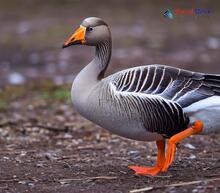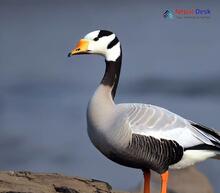Nepal, a land steeped in natural beauty and diversity, is home to an incredible array of bird species. Among these captivating creatures, the genus Anser holds a special place in the hearts of bird enthusiasts and conservationists alike. Here, we'll delve into the world of Anser, exploring its classification, common features, evolutionary relationships, and nomenclature within the context of Nepal's rich avian heritage.
A Deep Dive into Anser Classification
Under the umbrella of the larger Anatidae family, which includes ducks, geese, and swans, Anser is a distinct genus that primarily comprises true geese. These fascinating birds can be found throughout Nepal and are known for their striking beauty and impressive adaptability.
Identifying Common Features Among Anser Species
Anser species generally share several common features, making them easily recognizable within their avian family. Their relatively large body size, elongated necks, and stout bills set them apart from other birds in the Anatidae group. Additionally, these geese typically boast a sleek plumage that ranges in color from white to grey or brown. The intricate patterns on their feathers serve as both camouflage against predators and a unique identifier among birdwatchers.
Exploring Evolutionary Relationships Within the Anser Genus
The evolutionary history of Anser is marked by complex relationships between its various species. Scientific studies involving genetic analysis have shed light on these connections and enabled experts to better understand their development over time. The genus has evolved through a combination of divergence and intermixing among populations across various regions.
An Insight into Anser Nomenclature
The nomenclature of Anser follows a systematic structure consistent with taxonomy guidelines used for all animal species. The Latin term "Anser" serves as the genus name within the scientific classification, often combined with a species-specific epithet that further narrows down the identification. For instance, Anser anser and Anser cygnoides represent two distinct species of geese found in Nepal.
In conclusion, the world of Anser is both intriguing and complex, providing valuable insights into the richness of Nepal's avian inhabitants. By understanding their classification, common features, evolutionary relationships, and nomenclature, we can appreciate the integral role these fascinating birds play in the country's unique ecosystem. As conservation efforts continue to protect and preserve Nepal's wildlife, future generations can look forward to enjoying the beautiful sight of Anser geese gracing their skies and waterways.




